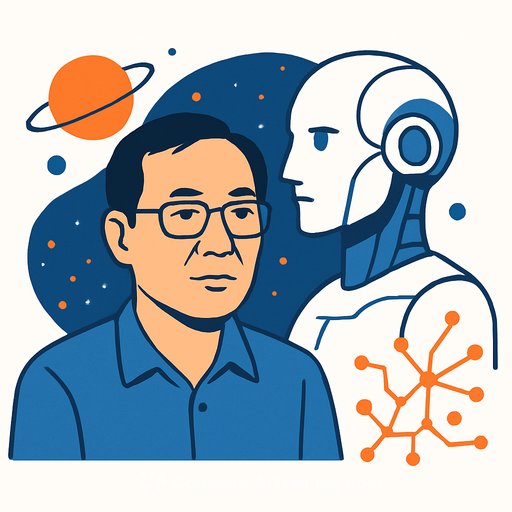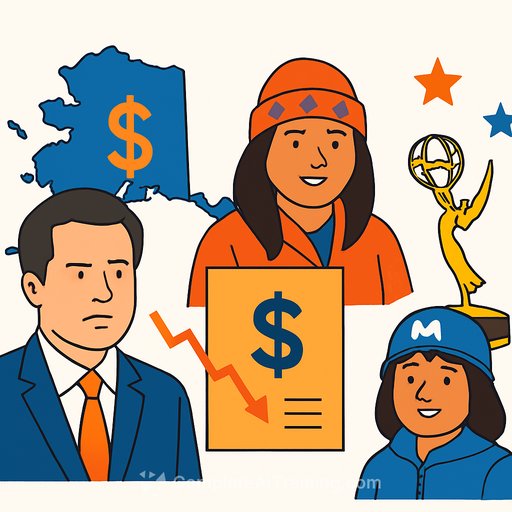Two New Zealand authors dropped from top prize after AI used in cover designs
Two respected writers - Stephanie Johnson and Elizabeth Smither - have been ruled out of the 2026 Ockham New Zealand Book Awards after AI was used in their cover designs. The books, Obligate Carnivore (short stories) and Angel Train (novellas), were submitted for the NZ$65,000 fiction prize and later disqualified under newly amended AI guidelines.
Their publisher, Quentin Wilson, said the rules were updated in August - after most covers had already been designed - leaving no time to adjust briefs. He called the outcome "heartbreaking," stressing the AI use had nothing to do with the authors' writing.
Johnson said authors usually have little say in cover production and she wasn't told AI tools were involved. Her cover features a cat with human teeth; she assumed it was a photo with edits and admitted she struggles to spot AI images. She's also concerned readers might think the writing itself used AI, which she said it did not.
Smither said the design team spent hours crafting her cover - a steam train with an angel half-obscured in smoke, nodding to Marc Chagall's figures - and worried the team's work was being disrespected. Both authors have previously judged Ockham categories and noted that, in their experience, covers carried little weight in judging compared to the text.
Nicola Legat, chair of the awards trust, said the Ockhams now take a firm stance on AI in books. The criteria apply equally to all entrants and aim to protect the creative and copyright interests of writers and illustrators, with room to revisit the rules as the tech shifts.
What this means for working writers
- Treat AI policies like contractual terms. If a prize, festival, or fund bans AI in any part of a book, that includes the cover and interior art.
- Lock your design workflow only after you've checked current guidelines. Rules can change between acquisition and submission.
- Add tool disclosure to your design briefs. Require designers to list tools used (e.g., Generative Fill, Midjourney, DALL.E) and certify no generative models were used if required.
- Keep provenance files. Store stock licenses, photographer credits, PSD history, and vendor attestations in one folder per title.
- Know the difference: assistive vs. generative. Spell-check and basic retouching may be fine; content created by a generative model likely isn't.
- Build time for a redesign. If a rule changes, you'll need a clean, compliant cover ready fast.
- Clarify contracts. Add indemnity and compliance clauses so the risk doesn't fall on the author alone.
- Communicate early with prize administrators. If there's any doubt, ask before submission.
Quick checklist before you hit submit
- Do the prize rules restrict AI in text, images, or both?
- Do you have written confirmation of tools used in the cover and interior art?
- Are all stock assets licensed and traceable to human-created sources?
- Did your designer avoid generative features in popular tools (e.g., AI fills)?
- Is there a fallback cover that's clearly compliant?
- Have you prepared a short public note clarifying your writing process if asked?
- Did you review updated rules within the last 30 days?
- Are indemnity and warranties covered in your publishing agreement?
Definitions that cause confusion
AI-assisted usually means tools that correct, suggest, or lightly edit (think grammar, color correction, noise reduction). AI-generated means content is produced by a model from prompts or transforms (new imagery, synthetic composites, or text created from scratch). Many policies draw a hard line at "generated." If a feature creates new content rather than editing existing human-made work, assume it's risky for awards submission.
Also note: some stock platforms now allow AI images. If a prize bans AI-generated art, make sure your stock source is flagged as human-made and keep clear documentation.
Why this matters
A cover can now disqualify an otherwise outstanding book. That's the takeaway. If you write for a living, treat AI compliance like you treat rights, permissions, and deadlines - a core part of the workflow, not an afterthought.
Helpful resources
- Ockham New Zealand Book Awards - official site for categories, timelines, and criteria.
- New Zealand Society of Authors (PEN NZ) - advocacy and guidance for authors, including policy updates.
- Complete AI Training: Courses by Job - practical courses to build safe, compliant AI workflows for creative work.
Bottom line for authors
Ask your designer about tools. Document everything. Keep a clean, human-made path from manuscript to cover. It's the simplest way to protect your work - and your eligibility.
Your membership also unlocks:






